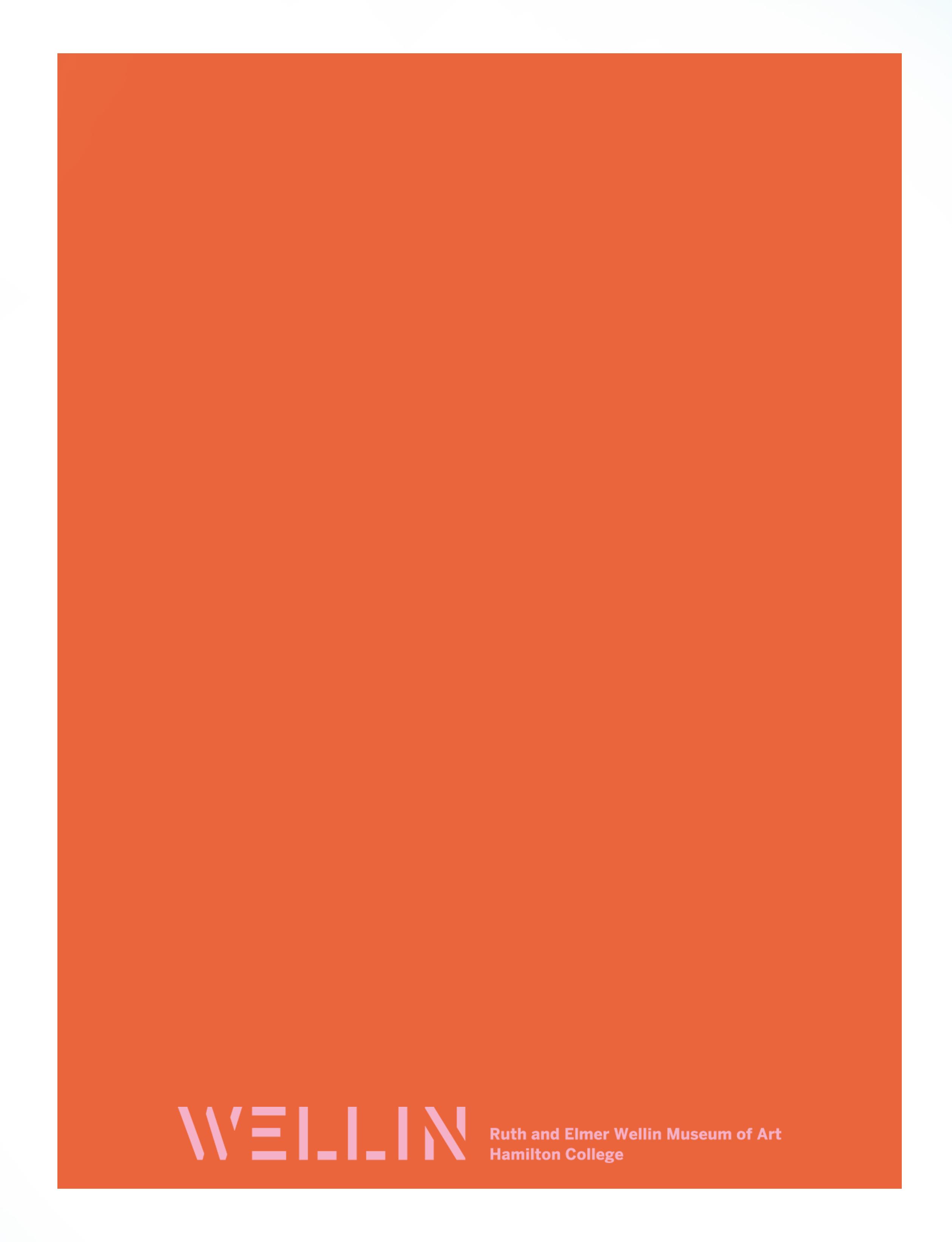


1
Hi everyone!! We are so excited to have completed our third edition of Collection magazine! We’ve worked extremely hard the past few months to develop a theme based on typography, which explores the connections between text and art. We hope that this edition will help you discover some of the excitement that we experience in art and at the Wellin.

As we continued to explore the possibilities of the magazine, we built ideas around creating something funky and playful. We wanted to make something that was accessible and that conveyed both the fun we had working on Collection, and the amazing opportunities the Wellin offers.
Throughout this semester, we have been working to learn more about the Wellin’s supporters and collaborators, while also following our own interests. We had the opportunity to speak with artist Julia Jacquette, who shared with us stories about her life, past and present. She demonstrated to us the importance of mentorship, and collaboration, aspects she has both experienced and given while working with the Wellin. In addition, we got to know the Wellin Safety Team, who graciously agreed to let us interview them and to tell us about their time in and outside of the Wellin. Finally, we walked across the Dunham parking lot to collaborate with the Letter Press Studio, where Seth Gottlieb showed us the ins and out of the letter press, and just how magical it can be. Through each of these interactions we learned more about the “behind the scenes” of working in a museum and making art, each which contributed to molding our understanding of the Wellin.
As always, most importantly, we’ve had so much fun making this latest edition of Collection our most exciting and creative one yet. We hope that through this magazine you can share some of our love for the Wellin!
Sae, Miriam,
We’re so excited to see what you think,
and Celia The editorial team of Collection Magazine
2




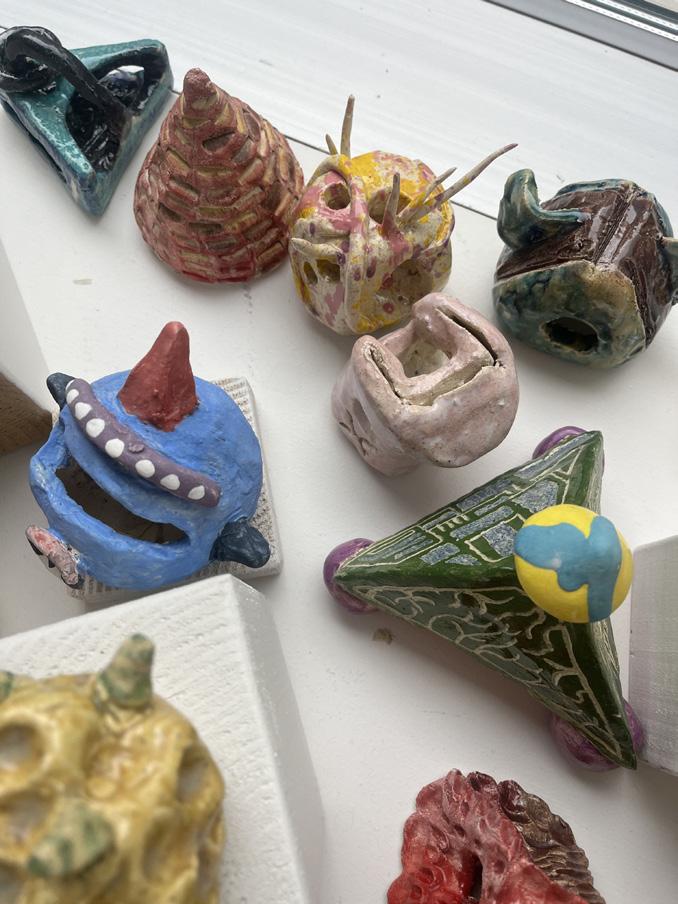
3
Kennedy Center
Schambach



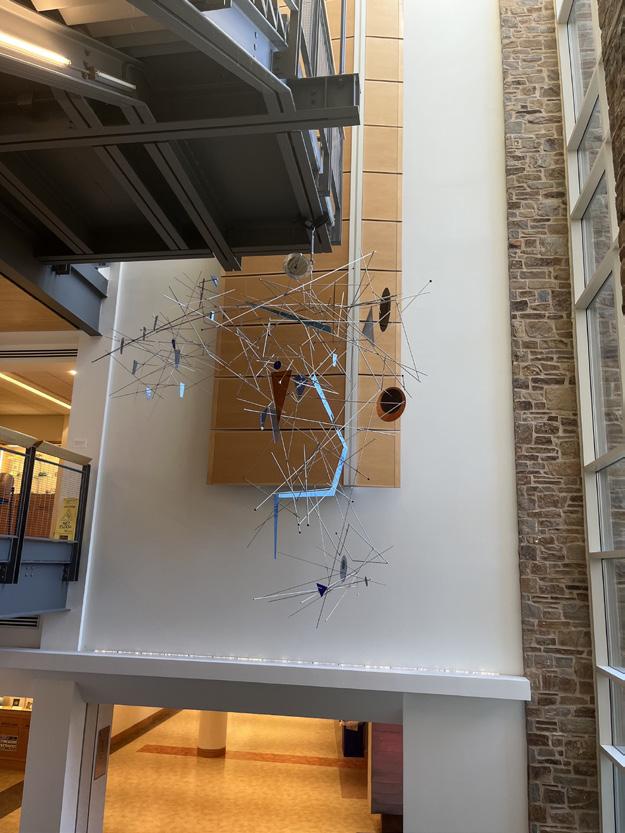



4
Taylor Science Center
McEwen
Christian A. Johnson
Busy hands are happy hands
Written by Miriam Lerner
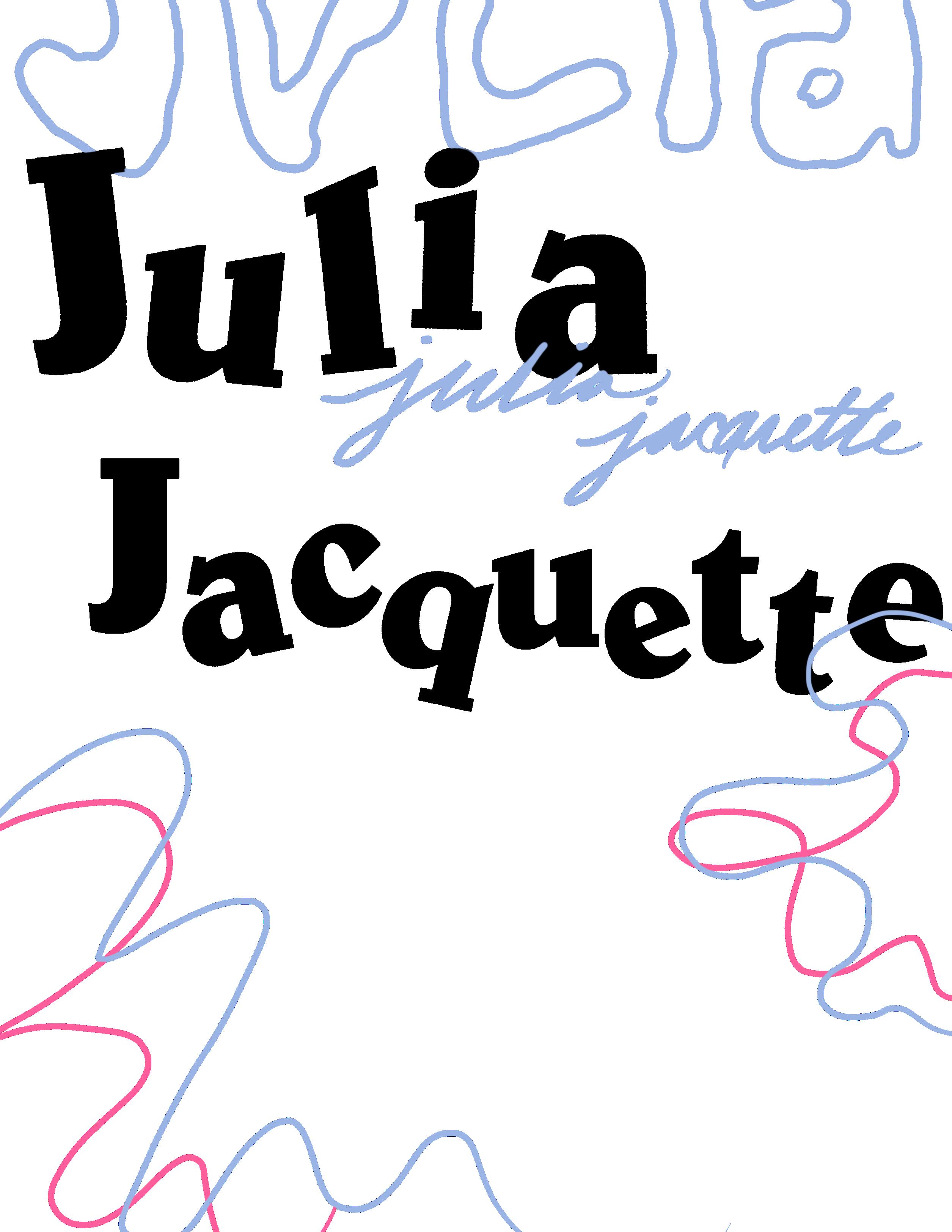
5
N
ew York City and Amsterdam based artist Julia Jacquette transforms the ubiquitous imagery of capitalism into a reflection on and a criticism of the ideals of beauty and perfection expected of girls and women.
Jacquette lives a life of many roles, juggling educational and administrative roles with her career as a painter. Both the department chair of the Fashion Institute of Technology’s (FIT) art department and a professor of fine arts, Jacquette holds immense responsibility and impact. She works to break the boundaries she faced early in her career, both by providing opportunities for new artists and by using her artworks to criticize, question, and reflect upon these barriers. She cites two artists as important influences on her development, her aunt Yvonne Jacquette, for whom she worked as a studio assistant, and artist Richard Haas, known for trompe l’oeil mural paintings. These two artists provided for her what she works to provide for her students: encouragement, opportunity, and experience.
Jacquette’s paintings depict the perfectionist ideal – which she describes as “glamour” –through a wide range of subjects including food, liquor, water, vintage ads, and wedding cakes. Her paintings exist both as subjects of intense desire and of vexation; they present an impossible standard that is ever-present even through its recognizability. Jacquette spends a few years focusing on each series she undertakes, painting the minute and the gigantic, in huge close-ups or in miniscule grids. She paints and repaints her subjects, inspired by the standards set by the commercial culture around her to create something new using pre-existing ideas and images.
Though influenced by pop artists including Andy Warhol, Jacquette works against comparisons to well-known male artists, and differentiates her work as existing “through the lens of feminism.” Jacquette purposefully depicts her images as a reflection of her own experiences as a woman, facing the challenges that accompany working in a male-dominated space, and fighting against the ideas determined by a patriarchal art canon. Her subject matter is drawn primarily from ads and media she finds in her daily life that incorporate the gender norms of a patriarchal society into their visual depictions.
Through several of her series, Jacquette focuses on ideas of gender identity, domesticity, and desire. These themes appear differently in each series, as her own beliefs about mass media and consumerism shift, and as different strategies are employed to build up the ideals she works to question. When asked about where she finds her inspiration, Jacquette described: “Sometimes it’s just walking down the street and noticing an image, or being in a store and noticing some object that was intriguing, or being in a gallery museum and seeing an artist’s strategy and thinking, ‘Ooh, I wanna do that or do it in my own way.”
6
She spoke about the many forms of media that society is constantly confronted with, ranging from pop-up ads on social media to J-Crew catalogs mailed straight to the door. Much of her art functions simply as a response to the media she is surrounded by: “I did all these years of, ‘what’s coming through my mail slot’ and, ‘what is on the magazine stand.’ These are all things that are being sold to me; these magazines want me to buy them. And so I was trying to think of: how do I react to what’s being put in front of me.” Through her paintings, Jacquette looks closely at how objects are being sold and to whom, and questions the use of visual imagery as a means of perpetuating gender norms.
Though her paintings are a depiction of the unattainable, throughout her career she has aimed to do the opposite. Inspired by the mentorship she received as an up and coming artist, Jacquette worked closely to collaborate with several students from FIT, incorporating their skills and abilities as yet another system of criticism toward the predetermined boundaries she herself had to work against. When discussing her own experiences, Jacquette first related the impact of her aunt, Yvonne: “I think her personal style of clarity, of engaging a person as an equal, even if that person is a young person, must have been really influential to me.” Jacquette explained that she was given the chance to work directly with her aunt, in her studio, and partake firsthand in the lifestyle and process of an artist. This experience continues to inspire Jacquette, as she navigates her own role as a professor, and as a mentor to other students. She recounts her collaboration with FIT student Kathleen, who worked with her to make Playground of My Mind, a graphic representation of the modernist playgrounds with which Jacquette grew up. On this project, Jacquette stated: “I couldn’t have done it without her (...) I really think about how my relationship with my aunt I’m kind of repeating in another way.”
Though Jaquette works predominantly from New York City, her influence extends beyond FIT and her studio. Since the start of her collaboration with the Wellin Museum she has engaged with Hamilton students, faculty, and the surrounding community, giving talks, docent training sessions, and coffee hours. During her most recent visit to campus, she offered some well-used advice she incorporated as both mentor and artist: “Busy hands are happy hands. Just keep your hands busy and it unleashes your mind.”
Julia Jacquette’s painting "Mouths of Four Gorgons" is currently on view in the exhibition Dialogues Across Disciplines at the Wellin Museum of Art and on the Wellin’s website.
7

8


9

10
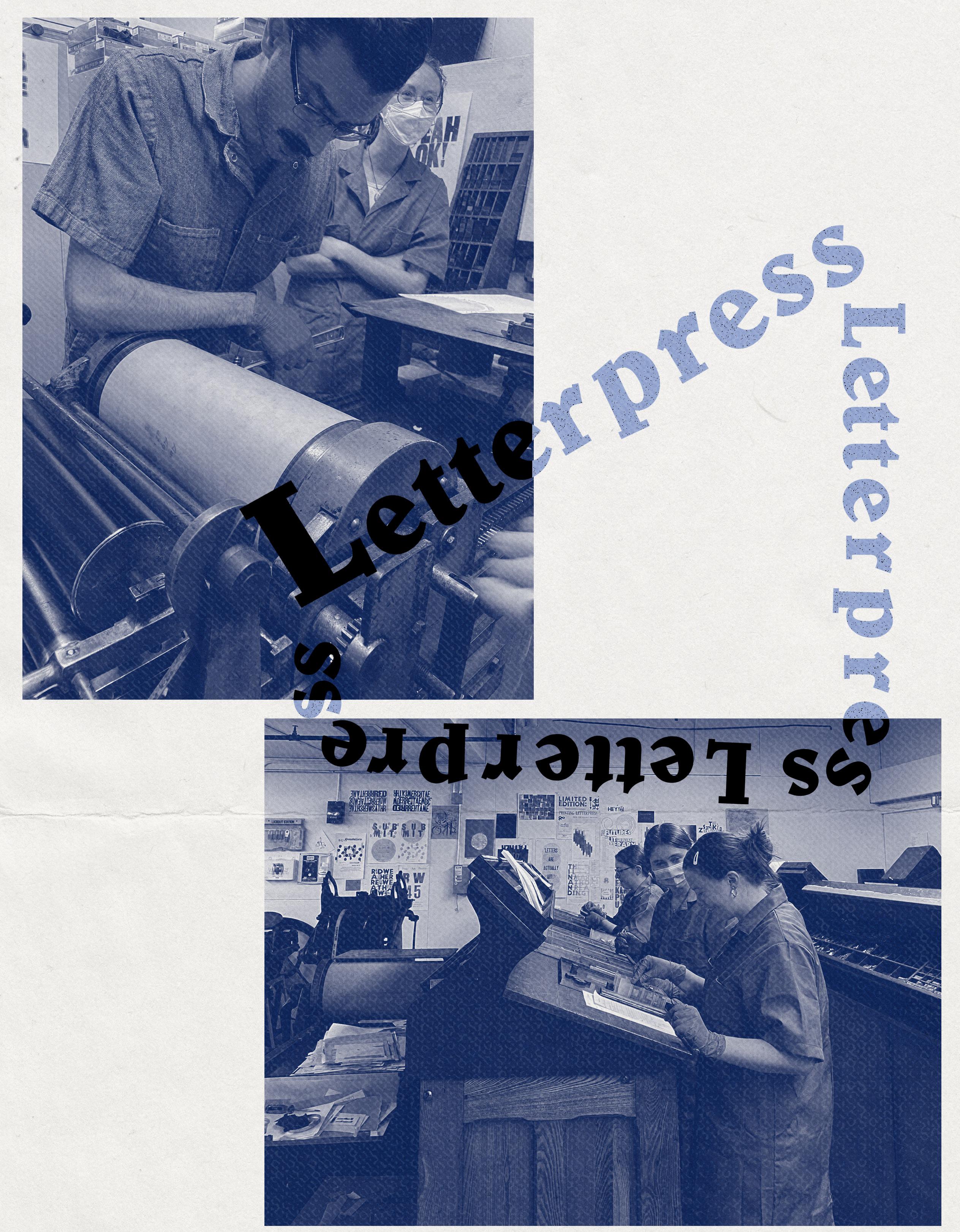


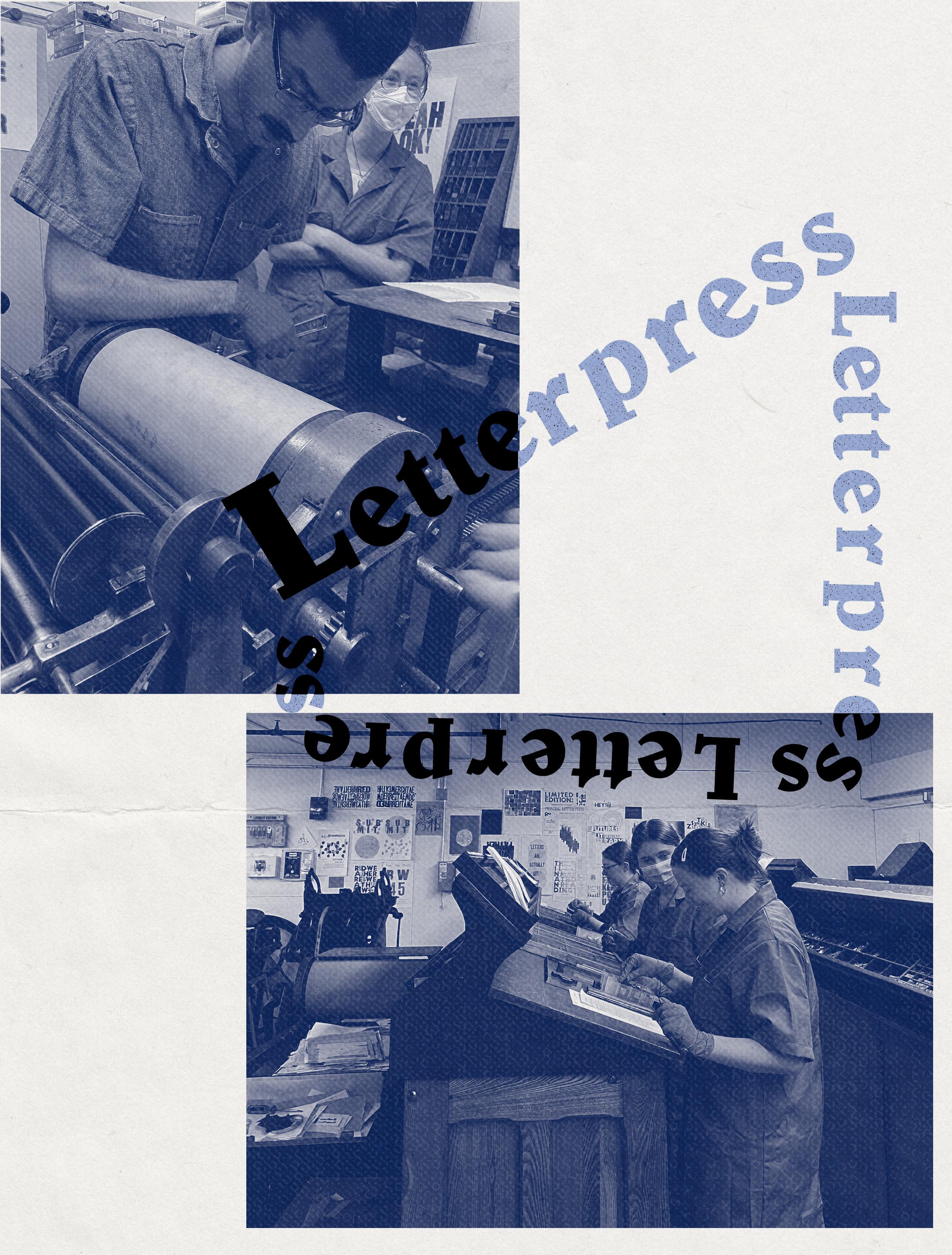
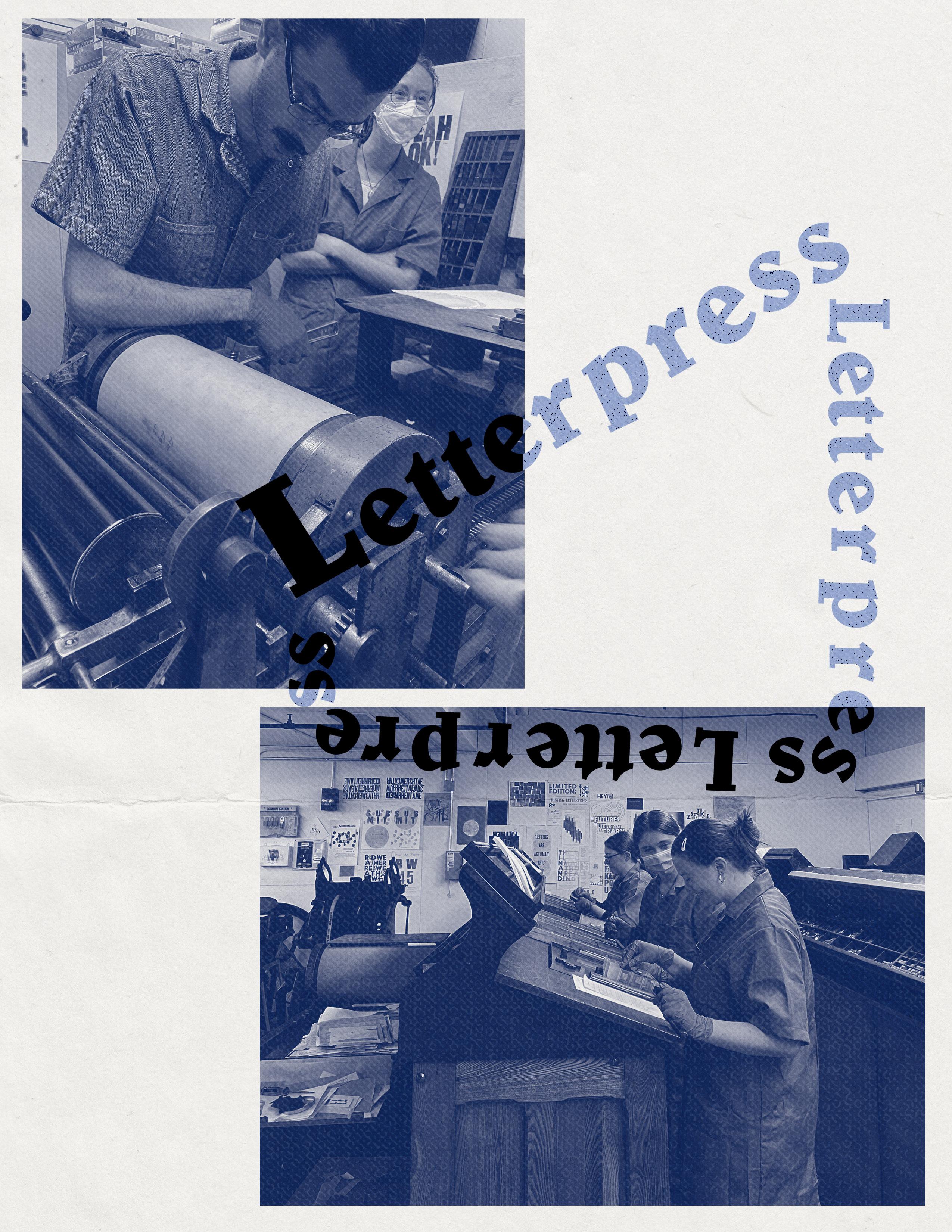
11
Letterpress Studio
Dunham Residence Hall
198 College Hill Road Clinton, NY 13323


Tucked away in the Dunham basement is home to one of Hamilton College’s hidden gems, the Letterpress Studio. Unknown to many, this expansive studio, previously the Senior Art Thesis studio, was converted to host cases of type and multiple printing presses; ready to be used by students to create a slew of prints, from playlists to essays to art projects and more.
The room is filled with the dull hum of chatter, the whir of the press, the rolling of ink and the pressing of type. The dynamism of the space is palpable and lively, even as it uses a process that has been around for over seven centuries and equipment that is over hundreds of years old. In many ways, the letterpress studio preserves history by using tools and techniques that have become nearly obsolete. Yet, with each print pulled off the press, the studio is able to create new history, with the never-ending creative interpretations of the medium and results. Perhaps the magic of letterpress printing is that no two prints are ever the same, and each print adds another to the visual and historical record of printing. This studio is available to students taking Intro to Letterpress in addition to occasional Creative Writing classes. The letterpress accepts commissions for on-campus events, including the collection of posters made for Yashua Klos’ Our Labour, which was on exhibition at the Wellin Museum in Spring 2022. Seth Gottlieb, Special Collections education and outreach librarian at Hamilton College, spearheaded this project along with Klos to develop posters for visitors to take home with them, posters that would marry the modern form of printmaking Klos uses and the historic one used by the letterpress studio. Each and every print pulled from the press was different, in the same way the Klos never used the same printing block in the same way twice.
12
“A man who works with his hands is a laborer; a man who works with his hands and his brain is a craftsman; but a man who works with his hands and his brain and his heart is an artist.”- Louis Nizer

13
No publication has revolutionized the world quite as the Nuremberg Chronicles. Considered to be a monument of incunabula, books published and printed before 1501, the Nuremberg Chronicle serves as a record of the history of the work from creation to the time of printing in 1493. The author, Hartmann Schedel, wrote the original text in Latin, but it was not necessary for the viewer to understand Latin to “read” the book. The book had a unique feature that would allow viewers to comprehend the content2,000 illustrations from 600 woodcuts illustrated and illuminated Schedel’s text. These woodcuts illustrated twenty six city landscape scenes, historical figures, Biblical events, decorative elements, and maps. These illustrations are among the earliest printed and serve as a hugely important historical record for modern scholars. At the time it was published, it was the most elaborately printed book in Europe, and the first to successfully integrate illustrations and text, forever changing the way we view and create print media.
This particular edition was printed three years after the original publication. Titled the Augsburg editions, these were printed to be smaller and thus more affordable, in addition to being translated into German as well as Latin. By removing both the language and cost barrier, the Augsburg edition was created to be distributed and read by many, emphasizing the new spread and dissemination of printed books and literature that occurred during the turn of the 16th century.
The woodcut print integrated into the page depicts Popes Gregorius, Victor, and Urbanus. Though not intended to be a work of art, the Nuremberg Chronicles features many artistic elements and choices, including the integration of woodcut and color within the text. Including illustration in a historic record forever changed the way print media was created. Images became an integral part of books and publications, drawing the reader into the text and making the content within become more accessible and “real” to the reader. Artistic choice began part of printmaking, emphasizing both the value of words and of images.
In our modern world, we are so saturated with images. Everytime we pick up our phone or open our laptop we see images first, then text. It’s remarkable to think about how different the visual language of the world was a few hundred years ago. In many ways, we take for granted our access to visual news and culture all due to new advancements in technology. The printing press was the first technological development in the accessibility of news. Since then, countless thousands of developments have been made, developments that essentially allow us to have access to the world’s information in our hands.

14

15



16
Get to Know the
The Wellin Museum has a team of 10 safety professionals, all with different backgrounds and experiences with art and museums, their experiences ranging from Parks and Recreation, working as a security guard at Woodstock ‘99, and conducting engineering research. For some, working at the Wellin was a post retirement gig, but became more than that. The Wellin has gone beyond being a way to fill the time, and has become a community, created by Hamilton students, Wellin docents and staff, visiting artists and members of the safety team.
Mike Jeffery


Mike, Safety Manager, has been working with the Wellin for nine years. Coming from working as a Parks and Recs director in New Hartford for 35 years, Mike started working at the Wellin when he retired. When an opportunity came up to work full time at the Wellin, it was an easy choice to take that position. “It’s a very friendly work environment.”
For Mike, Julia Jacquette’s “Playground of my Mind’’ was a memorable exhibit, “For obvious reasons, I was a parks and recreation director so I could connect with playground safety… When they were building the playground exhibition I was looking at it from a safety perspective, like ‘oh that’s a pretty high climbing area there should be a safety pad there. I really enjoyed conversations with Julia Jacquette and learning about her work and inspiration with playgrounds.”
Any museum secrets? “Sometimes we think it’s haunted, like all museums. It can get pretty spooky when locking up at night.”
Gerry Schaller
Gerry ended up working on the Wellin due to a chance encounter at Hannaford. After retiring from a career at a steel mill in Rome, he was approached by a Wellin staff member who asked if he would be interested in a part time safety position at the Museum. He started working in 2018, with some time off in the middle due to the pandemic. Wellin staff bonds run deep; Paul and Gerry coach baseball together in Westmoreland, and members of the safety team often play golf together on the weekends.

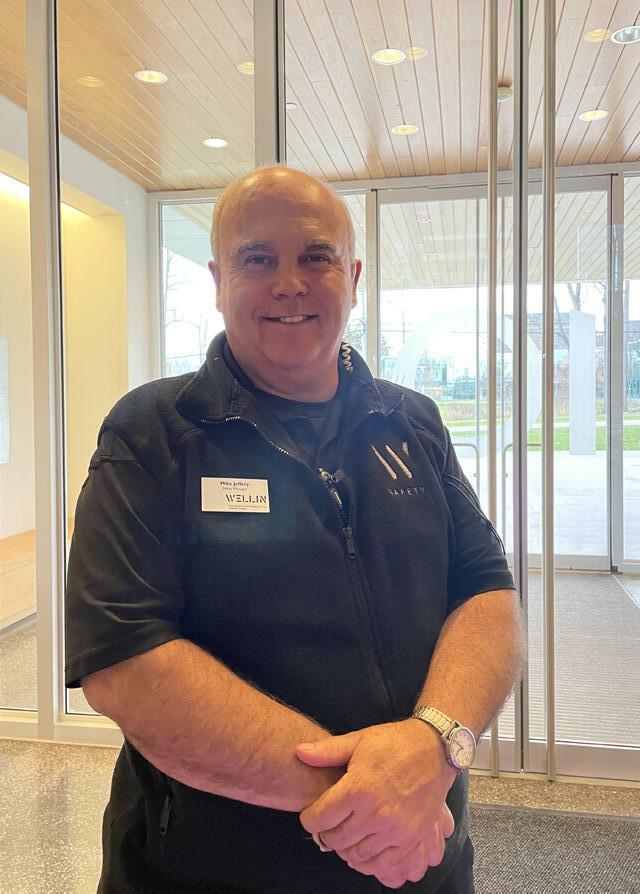
Coming to Wellin, Gerry really had “no background and experience in art. I am interested in art now, and I especially like this new exhibit, especially because it shows ten years and I haven‘t worked here as long.” In terms of work culture, “I come here because I enjoy the people.”
Gerry’s favorite exhibit is the current one, “Dialogues Across Disciplines.” “It’s great to see art from the past ten years, especially because I started working here more recently.”
17
Wellin Safety Team
Paul Engelhart


Paul, a Wellin safety officer, came from a background working as an engineer from the Air Force Research Lab in Rome, New York, only a few miles down the road. Paul is a part of the “morning crew,” a part time position he enjoys “It’s great. It’s a good environment and a great way to connect with people. I enjoy all the exhibits. It’s nice to meet the artists that come in and great to meet with the docents and students.” Paul’s favorite exhibition - “Sarah Oppenhiemer’s Sensitive Machine. Coming from an engineering background, I really liked what was behind the scenes of it. I was extremely interested in seeing how it all worked, trying to look under the instruments and see how it all connected. It’s like the behind the scenes of seeing how it was put together, with how minimalist it all was. I also really like Elias Sime’s Tightrope and Yashua Klos’ Our Labour. I love seeing how these artists worked with technical pieces and seeing how they work with students.”
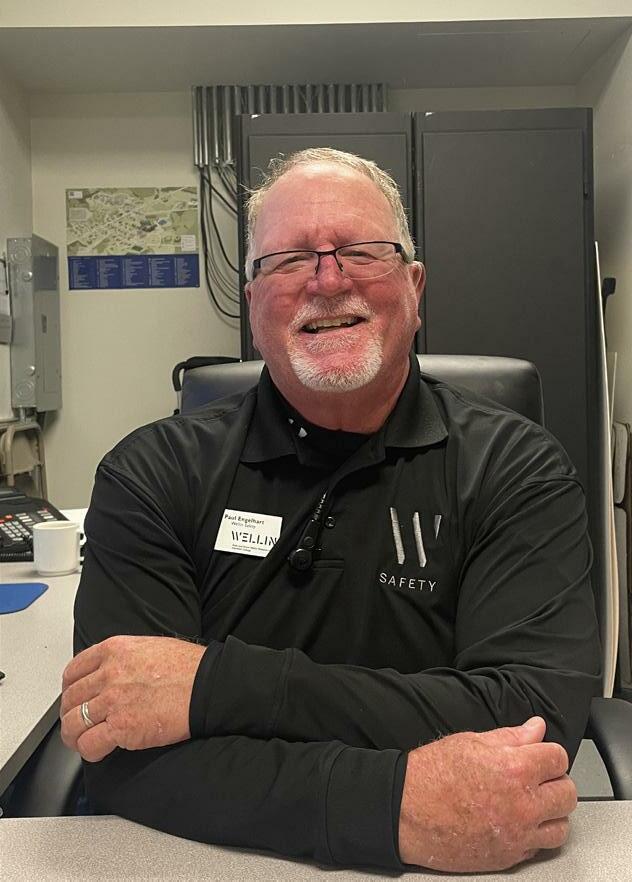
Lori DeMarco
Lori has been working at the Wellin for over eight years. She got her start working in security and safety in the Woodstock Music Festival in Rome in 1999. As a Black Belt in Karate, she and others in her studio were approached to work security at the festival. Soon, she got her security license and worked as a security guard at Rome Central School district and Turning Stone Casino before retiring and coming to work at the Wellin. “I like the whole atmosphere. It’s like a family working here. I enjoy coming to work, or else I wouldn’t do it and just stay retired.”

As a hobby, Lori is an avid crafter, enjoying knitting, crocheting, and sewing. “Coming here and getting to see the different ways people express themselves, it’s very cool.”
A favorite visiting artist of Lori’s was Renee Stout, artist of The House of Chance and Mischief.
Working at the Wellin has become more than just a job for many safety officers and staff. It is a community fostered not only by the love and enjoyment of art and museums, but also a commitment to public safety built upon principles of engagement and teamwork. The diverse backgrounds and interests represented in the safety team lends itself to a cohesive and well-rounded team committed to keeping the students and art safe, and we are so thankful for their hard work and dedication.
18

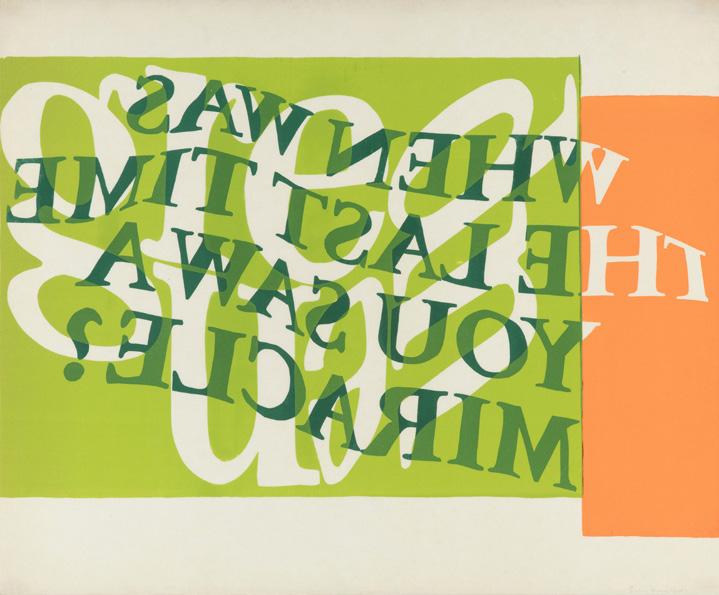
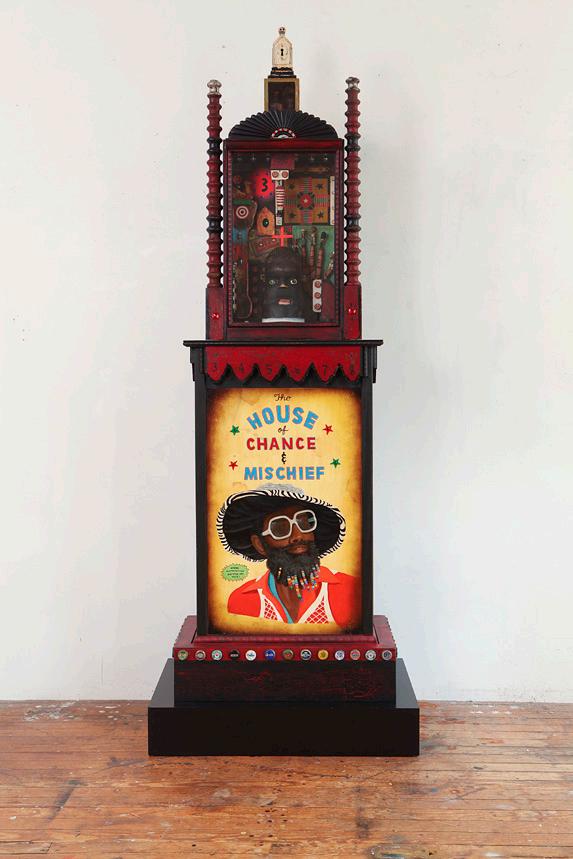
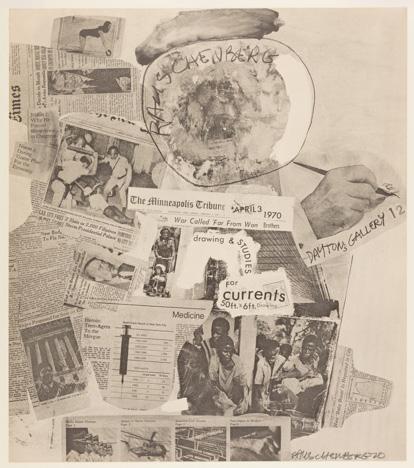
19
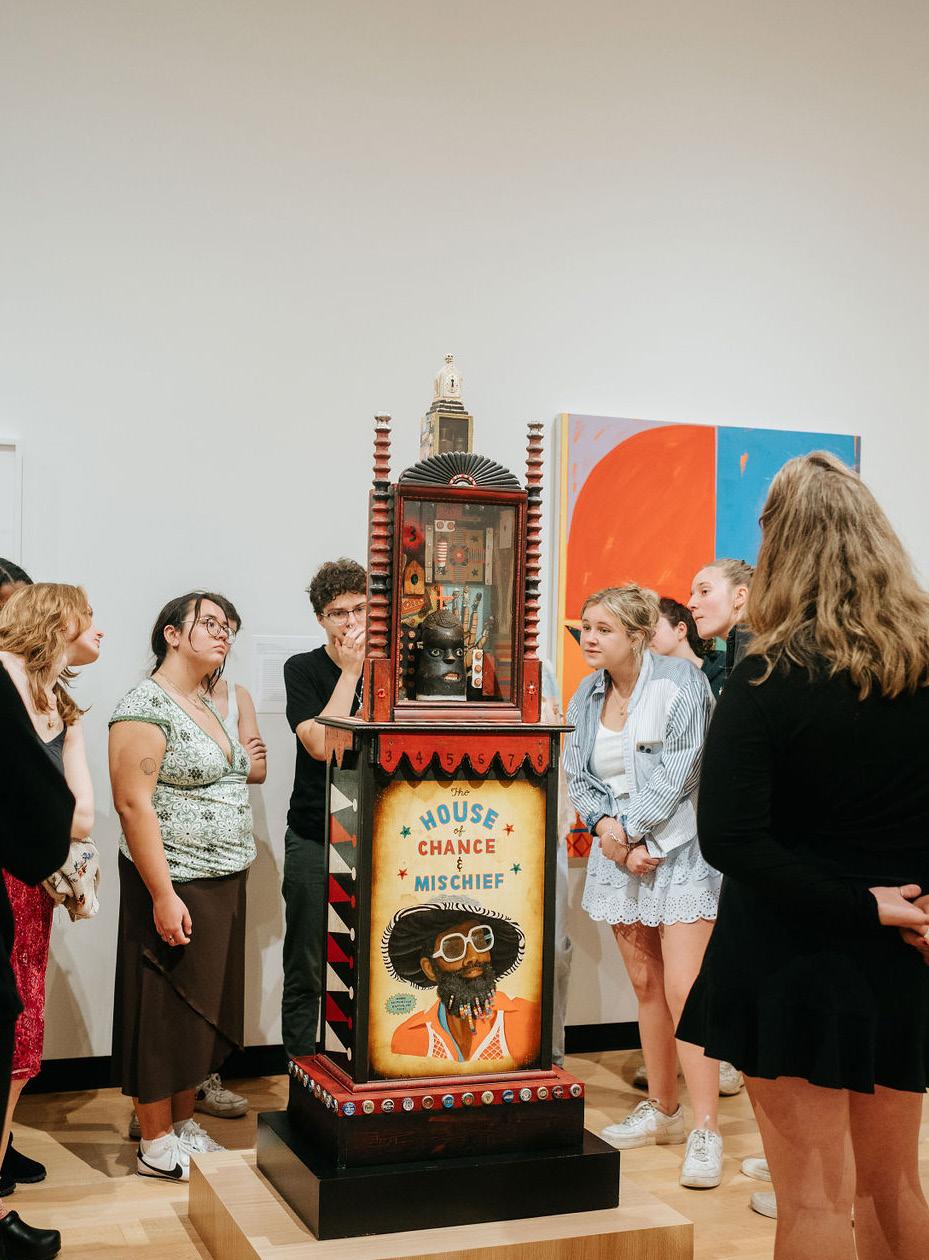
20
Photo by Janelle Rodriguez
Important Upcoming Dates
Thursday, December 01, 04:00-05:30 PM: Wellin Open Studio
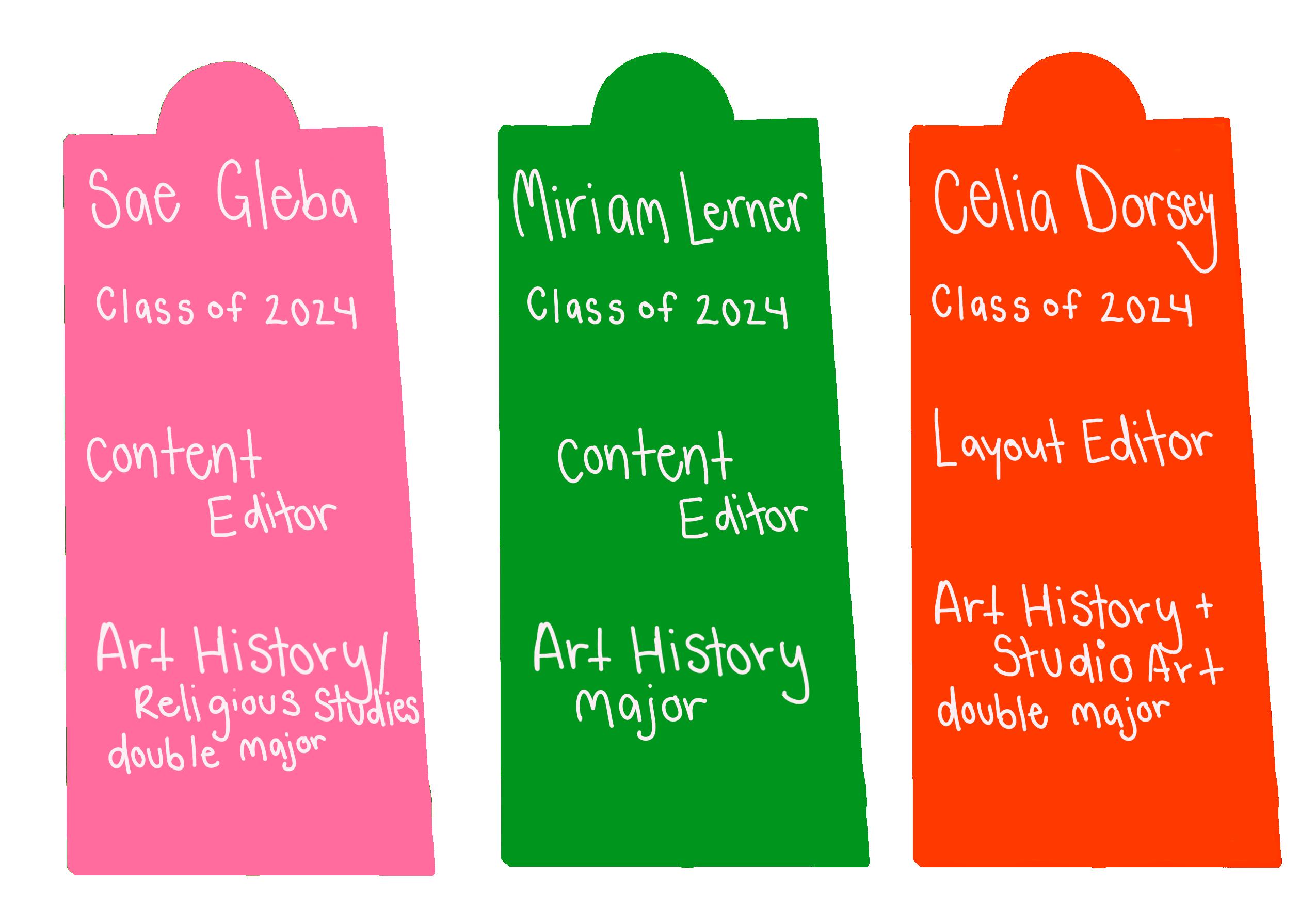
Make art with the Wellin Museum in our drop-in studio art workshops for the Hamilton community. Everyone is welcome, regardless of your level of experience.
Thursday,
December
08,
06:00-08:00

PM: Signature Style Issue 17 Launch Party
This event will launch Issue 17 of Signature Style Magazine, highlight the people who produced it, and share the magazine with students and other fans of fashion on campus.
Saturday, January 21, 02:00-03:00 PM: Wellin Kids
Come to the Wellin Museum to look at art, explore new materials, and make a creative project. Recommended for families and children ages 5 and up.
Thursday, January
26, 04:00-05:30
PM: Wellin Open Studio
Make art with the Wellin Museum in our drop-in studio art workshops for the Hamilton community. Everyone is welcome, regardless of your level of experience.
S M C
21
Page 1
Jeffrey Gibson, "IF I RULED THE WORLD," 2019. Digital print, silkscreen, and collage, with gloss varnish, in custom-color frame, 8 × 34 in. (96.5 × 86.4 cm). Ruth and Elmer Wellin Museum of Art at Hamilton College, Clinton, NY. Purchase, William G. Roehrick ‘34 Art Acquisition and Preservation Fund. © Jeffrey Gibson.
Page 8
Jacquette, Julia. "Playground of My Mind," DelMonico Books, Munich, 2017, p. 2.
Page 10
William Wegman. "Back and Beyond," 1998. Digital print with acid dye on silk twill, (34 1/2 x 36 in. (87.6 x 91.4 cm). Ruth and Elmer Wellin Museum of Art, Hamilton College, Clinton, NY. Gift of William E. Williams, Class of 1973, in honor of the Class of 1973. Copyright estate of the artist or assignee.
Page 10
Dorothy Shakespear. "Hommage à GB WL TSE EP," 1937. Watercolor on paper, mounted on cardboard, 24 1/2 × 12 3/4 in. (62.2 × 32.4 cm). Ruth and Elmer Wellin Museum of Art, Hamilton College, Clinton, NY. Gift of Omar S. Pound, Class of 1951. ©T/U/A Fifth Will of Omar Pound.
Page 10
Craig Zammiello. "Macrodontia," 2018. Photogravure, spitbite, and direct gravure with inkjet chine colle, screenprinting, and collage, 24 1/2 × 19 13/16 in. (62.2 × 50.3 cm). Ruth and Elmer Wellin Museum of Art, Hamilton College, Clinton, NY. Purchase, The Edward W. Root Class of 1905 Memorial Art Purchase Fund. © Craig Zammiello and The LeRoy Neiman Center for Print Studies, Columbia University.
Page 14
Johann Schonsperger, "Leaf from the Liber Chronicarum (Nuremberg Chronicle)," 1497. Double-sided woodcut with hand-coloring, 11 1/16 × 7 13/16 in. (28.1 × 19.8 cm). Ruth and Elmer Wellin Museum of Art at Hamilton College, Clinton, NY. Purchase, The Edward W. Root Class of 1905 Memorial Art Purchase Fund. This image is in the public domain.
Page 15
William Zorach. "Figure Study," after 1918. Plasticine, 18 in. × 13 1/2 in. × 11 1/2 in. (45.7 × 34.3 × 29.2 cm). Ruth and Elmer Wellin Museum of Art, Hamilton College, Clinton, NY. Gift of Mrs. Catherine W. Palmer. © William Zorach.
Page 19
Corita Kent. "Green Up," 1966. Screenprint, 29 7/8 x 36 1/8 in. (75.9 x 91.8 cm). Ruth and Elmer Wellin Museum of Art at Hamilton College, Clinton, NY. Purchase, The Edward W. Root Class of 1905 Memorial Art Purchase Fund. © Corita Art Center, a project of Immaculate Heart Community. Image licensed by Artist Rights Society (ARS).
Page 19
Robert Rauschenberg. "Drawings and Studies for 'Currents' Exhibition Poster," 1970. Offset lithograph, 35 1/16 × 30 3/8 in. (89.1 × 77.2 cm). Ruth and Elmer Wellin Museum of Art at Hamilton College, Clinton, NY. Gift of Mr. and Mrs. Timothy Eland. © Robert Rauschenberg Foundation. Image licensed by Artist Rights Society (ARS).
Page 19
Renée Stout. "The House of Chance and Mischief," 2008-10. Acrylic, latex paint, spray paint, plastic rhinestones, wood, glass, metal, varnish, collage, and found objects, 77 × 28 1/16 × 20 in. (195.6 × 71.3 × 50.8 cm). Ruth and Elmer Wellin Museum of Art at Hamilton College, Clinton, NY. Purchase, William G. Roehrick ’34 Art Acquisition and Preservation Fund. © Renée Stout.
Captions
